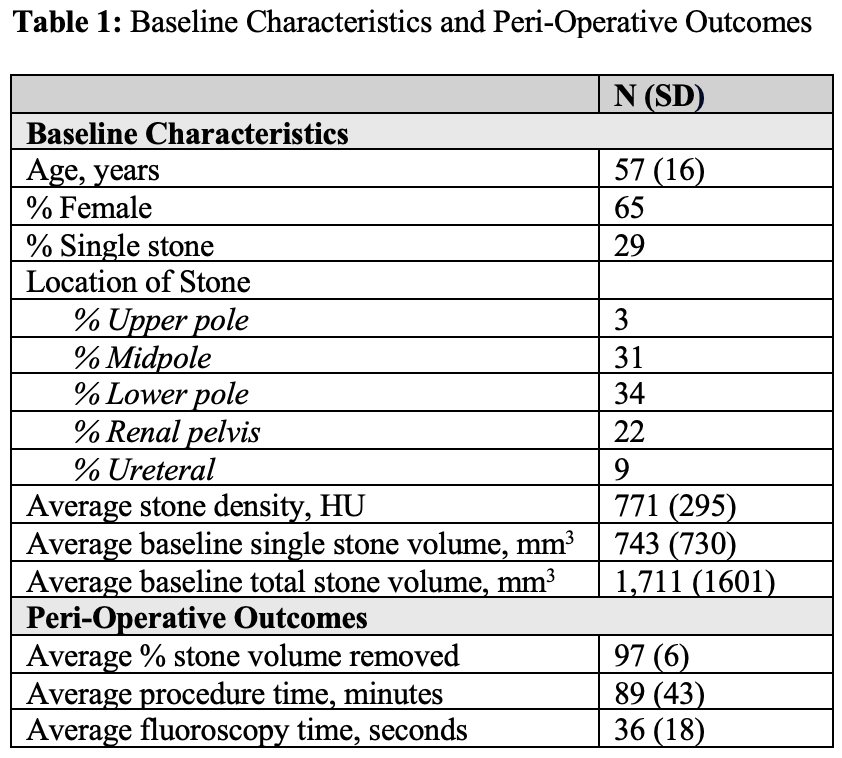Back to 2025 Abstracts
Efficacy and Safety of the CVAC 2.0 Ureteroscope: Early Results from a Single-Center Retrospective Study
Nathaniel Fox Hansen, MD, MPH, George Haleblian, MD, Daniel Wollin, MD.
Brigham and Women's Hospital, Boston, MA, USA.
BACKGROUND: CVAC 2.0 is an FDA-approved single-use ureteroscope that enables simultaneous lasing and suctioning under visual guidance.
METHODS: A retrospective cohort study was conducted at a single center. Demographic characteristics, procedure factors, and stone factors were collected. Pre- and post-operative CT scans were obtained. Stone volumes were calculated using the ellipsoid formula (volume = ∏*l*w*d*0.167).
RESULTS: 17 patients and a total of 32 stones were treated with CVAC 2.0. The average age of participants was 57 and 65% were female. The most common site of treated stone was lower pole followed by midpole (34% and 31% respectively). The average baseline single stone volume was 743mm
3 (or 11mm x 11mm x 11mm) and the average baseline volume of all treated stones prior to intervention was 1,711mm
3. On average, 97% of stone volume was removed following treatment with the CVAC 2.0. The average procedure time was 89 minutes and average fluoroscopy time was 36 seconds. There were no intra-operative complications. At one month follow-up, only a single patient returned to the emergency department with a post-operative complication (acute urinary retention requiring a foley catheter).
CONCLUSIONS: CVAC 2.0 is both safe and has a high level of efficacy that is comparable to standard of care ureteroscopy and PCNL. The high stone clearance rates achieved even for large lower pole stones suggests that CVAC 2.0 may serve as an effective alternative for patients who are either too comorbid or who choose not to undergo standard of care PCNL for treatment of large lower pole stones.


Back to 2025 Abstracts

